When the garden is offering up a prolific harvest. When your CSA box is overflowing with abundance. And when the farmers market has your very favorite fruit or vegetable available in surplus. That’s when you need to know how to preserve the flavor of summer. Home food preservation methods can vary depending upon what you wish to preserve; here’s what you need to know.
See all of my food preservation recipes here.
JUMP TO:
-
- Preserving with Dehydration
- Water Bath Canning
- Pickling with Vinegar
- Pressure Canning Low Acid Foods
- Fermenting for Preservation (and Probiotics!)
- Freezing the Harvest
- Root Cellaring for Old Fashioned Food Preservation
- Salting Foods for Long Term Storage
- Infusing Vinegar
- Freeze Drying
- Vacuum Sealing
The Handcrafted Pantry
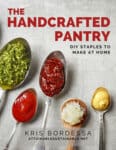
Ready to DIY your pantry with more wholesome ingredients? Check out my ebook, The Handcrafted Pantry! Filled with delicious recipes for some of your favorite condiments, snacks, and toppings, it’s the guide you need to start skipping packaged products and embrace homemade.
1. Dehydration
Dehydrating foods eliminates water activity and the potential for bacterial or microbial growth, making it shelf stable. This method works with herbs, fruits, vegetables, and meat.
Those store-bought fruit rollups that are so popular in kids’ lunch boxes are dehydrated, as is your favorite beef jerky. Dehydration is one of the easiest methods of preserving foods.
5 Easy Steps to Transform Your Pantry!
Ready to switch from store bought to homemade? Let me help you make some changes! Grab my FREE five-part guide to getting started.
As long as you make sure that the foods are sufficiently dried, they will last in airtight containers indefinitely. Some (like dried fruit) makes great snacks as is, but dried foods can be rehydrated, too. Dried apple slices can be turned into apple pie and dried veggies are great in homemade soup.
- Special equipment: Dehydrator (You can also use a conventional oven set to a low temperature, but a dehydrator is likely to use less energy.)
Recipes to try:
2. Water bath canning (my favorite food preservation method!)
Canning food in sealed jars makes them shelf stable, much like your favorite canned goods at the grocery store. There is an important food safety limitation with this method, though. It can only be used for high acid foods. This includes products pickled with vinegar, fruits, tomatoes, and jams and jellies.
- Special equipment: Canner (a large pot with a rack), jar lifter, canning jars, lids, and rings [Read all about canning equipment here.]
Recipes to try:
-
-
- Passion fruit jelly
- Applesauce
- Watermelon rind relish
- Ginger spiced nectarines
- Chai spiced peaches
- Pineapple jalapeno jam
- Caramelized onion jam
- Mango chutney
- Zucchini relish
- Tangerine jam with ginger and vanilla
- Chow chow green tomato relish
- Tomato chutney
- Salsa for canning
- Homemade raspberry jam
- Black cherry preserves
- Mango jam
- Blueberry jam
-
3. Pickling for food preservation
Pickled foods are those that are preserved in vinegar, such as dill pickles, sweet pickles, and pickled onions.
Pickled food products can be preserved using the water bath canning method or they can be stored in the refrigerator (thus the term refrigerator pickles).
Pickling is easy! Fill jars with vegetables and pour a brine over the top, then either process in the canner (using a safe recipe to preserve food) or pop them in the fridge.
- Special equipment: None for refrigerator pickles
- Read this to find out more about the difference between pickling and fermenting.
Recipes to try:
4. Pressure canning
Foods that cannot be preserved using the water bath method can be processed under pressure. This includes low acid foods like non-pickled vegetables, meat and fish, broth, and prepared soups.
This home canning method requires a special pressure canner (an electric pressure cooker is NOT a safe method for pressure canning).
Jars must be processed at pressure for very specific amounts of time to prevent bacterial growth inside the jars. This isn’t a difficult process, but you do need to be sure to follow certain safety guidelines when pressure canning.
- Special equipment: Pressure canner, jar lifter, canning jars, lids, and rings
Recipes to try:
5. Fermentation
Probably one of the oldest methods of food preservation, fermentation produces an acid that preserves food.
One common method of fermenting vegetables is using a salt brine or simply massaging vegetables with salt. This is how sauerkraut is made.
Once prepared, it’s essential that the food is not exposed to oxygen. This is done by keeping fresh produce submerged under liquid to prevent food spoilage. There are a number of different fermenting systems available, but if you don’t want to invest in those, you can get by without them.
- Special equipment: Weights (you can buy glass weights or just use clean, smooth stones)
Recipes to try:
6. Freezing foods
One of the easiest preservation techniques, and if you’ve got a freezer, you’re likely using this method already, even if just to preserve some dinner leftovers. It’s an easy method for preserving excess fruits and vegetables from the garden, too.
Freeze chunks of fresh peaches and nectarines for your breakfast smoothies or fill freezer-safe containers with blanched green beans, corn, or fresh spinach.
Special equipment: Freezer containers [go here for a list of freezer safe options that are not plastic]
Methods to try:
7. Root cellaring
Before refrigeration, the root cellar was a critical part of food storage for people. The cool, dark space under a home or built into the side of a hill was perfect for storing crops like pumpkins, potatoes, apples, and carrots. These “storage vegetables” will keep for months after harvest when stored right.
A root cellar is also an excellent place to hang smoked sausage and other charcuterie and to store your home canned goods. It can be kind of a perfect storm of storage for the various food preservation methods you use!
- Special equipment: None
Methods to try:
-
-
- Check out my friend Teri’s ebook, Building a Homestead Root Cellar
- Turn a garbage can, an old ice chest, or refrigerator into a DIY root cellar
-
8. Salting for food preservation
Salt acts as a preservative. Early sailors and pioneers preserved meat with salt, burying pieces of meat in barrels of salt.
While I haven’t gone so far as to salt meat, this method works well to preserve citrus, too. Salted citrus can last for years and can be used to flavor dishes as you cook. (You wouldn’t want to eat a whole salted orange, though!)
- Special equipment: None
Recipes to try:
9. Infused vinegar
Infusing vinegar with the flavor of fruits and herbs is a way to save some of your favorite flavors to savor later.
Use infused vinegar in marinades or to make salad dressing. Infused vinegar will last indefinitely on a pantry shelf.
- Special equipment: None
Recipes to try:
10. Herbed salts and sugars
Another way to preserve the flavor of herbs, herbed salts and sugars are not going to sustain you in a crisis, but they do allow you to enjoy some of your favorite flavors beyond their seasonality. Combining chopped herbs with salt dries out the herbs. Use herbed salt to season meats or stir into soups and casseroles. Herbed sugars (think: mint) are perfect for sprinkling on desserts or stirring into tea.
- Special equipment: None
Recipes to try:
11. Freeze drying at home
Freeze drying is for hard-core food preservers. While you can freeze dry food right in the freezer, it takes weeks and a lot of freezer space. Using dry ice is another method; it’s faster, but requires access to dry ice. Both of these methods are inconvenient at best. New technology has recently been made available to consumers in the form of a freeze dryer machine, much like a small refrigerator. I’m told they work well, but they’re not cheap. It could be a great investment for a food co-op or collective, but it’s probably out of the price range of most DIYers.
- Special equipment: Freeze dryer
Methods to try:
12. Vacuum sealing
By removing all of the oxygen from a container, we can extend the shelf life of various types of food. I debated adding vacuum sealing to this list of food preservation methods, as it’s not really a stand-alone method of preserving foods.
Vacuum sealing must be used in conjunction with other food preservation methods. Vacuum sealing meat will allow you to keep it longer in the freezer. Vacuum sealing food that’s been freeze dried will help retain the crispness of those foods. And bulk dry foods like rice and oats will last much longer when they’ve been vacuum sealed.
This method has the drawback of requiring plastic or Mylar bags. While I like the concept of vacuum packing food, the need for these plastic bags has put me off so far.
Additionally, there’s a special vacuum sealing machine that heat-seals these bags. (It is possible, though, to vacuum seal without a machine.) There’s also a special attachment that allows you to vacuum seal dry foods in jars. This could be useful for extending the life of nuts and dried fruits, especially here in my humid climate.
- Special equipment: Vacuum sealing system
Methods to try:
Originally published June 2019; this post has been updated.

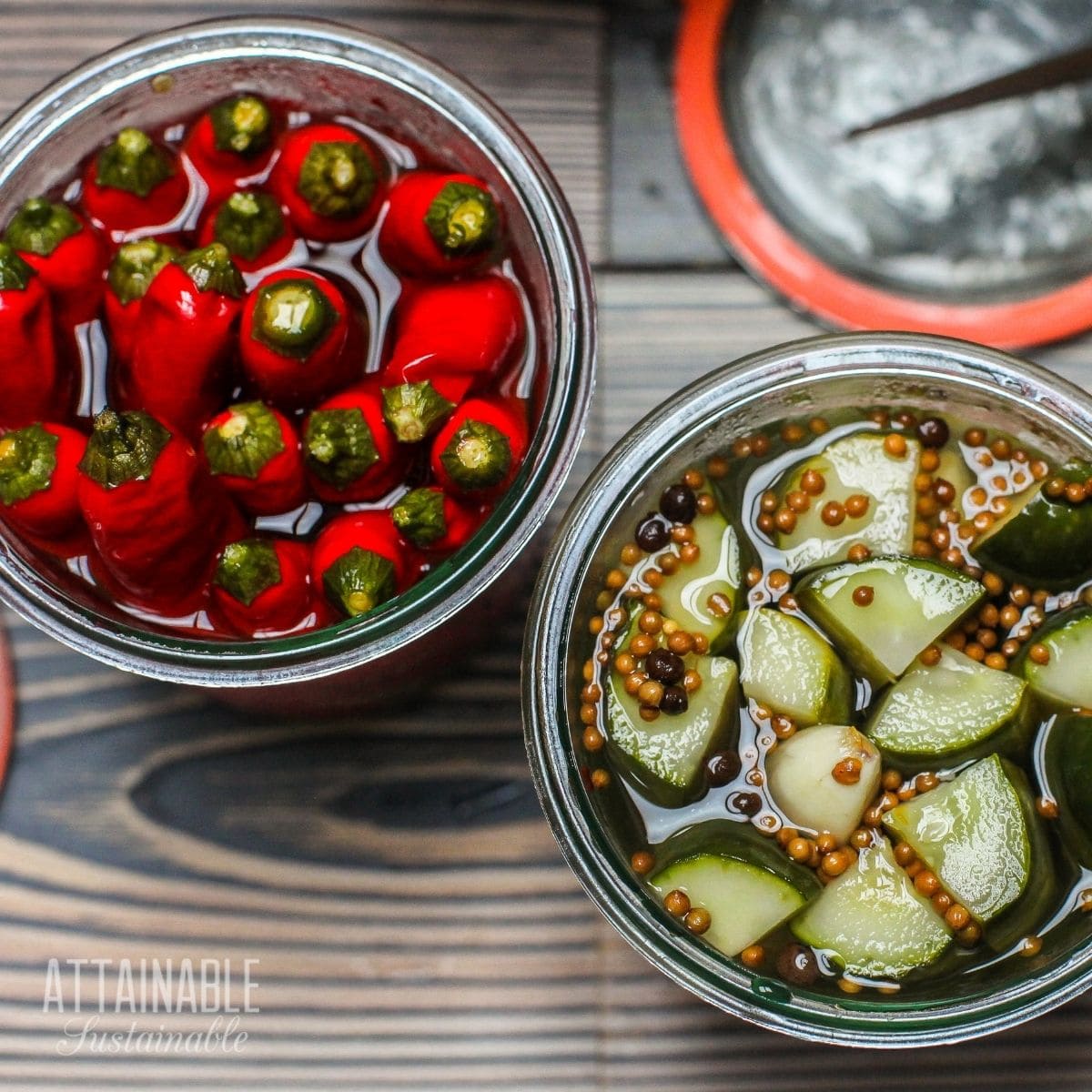
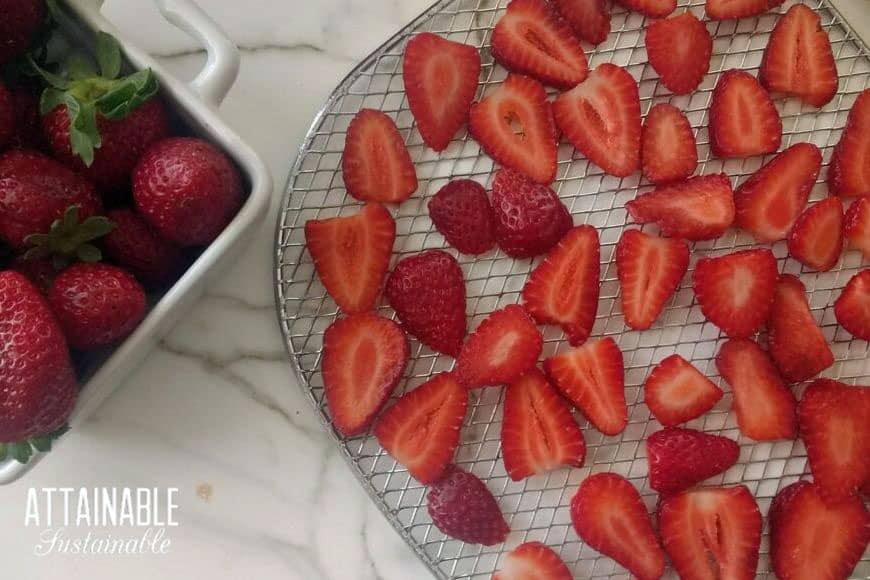
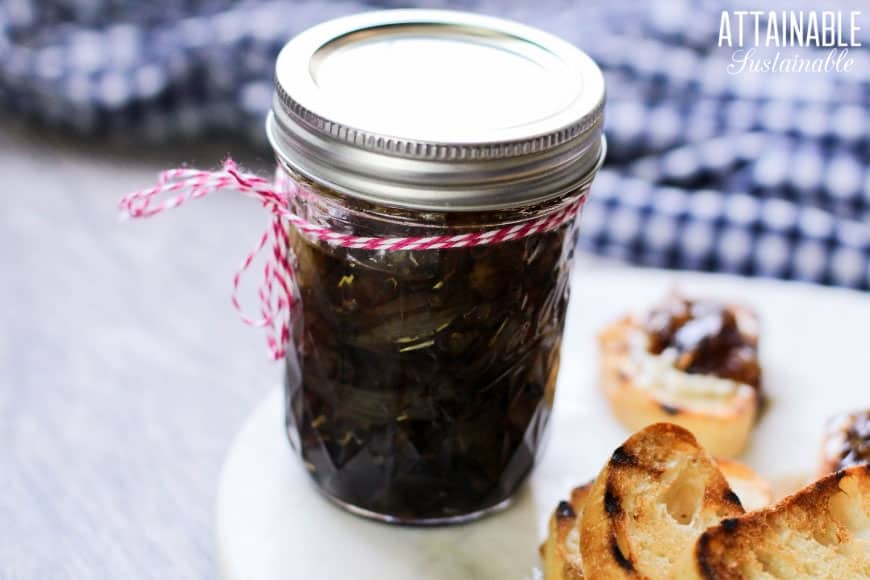

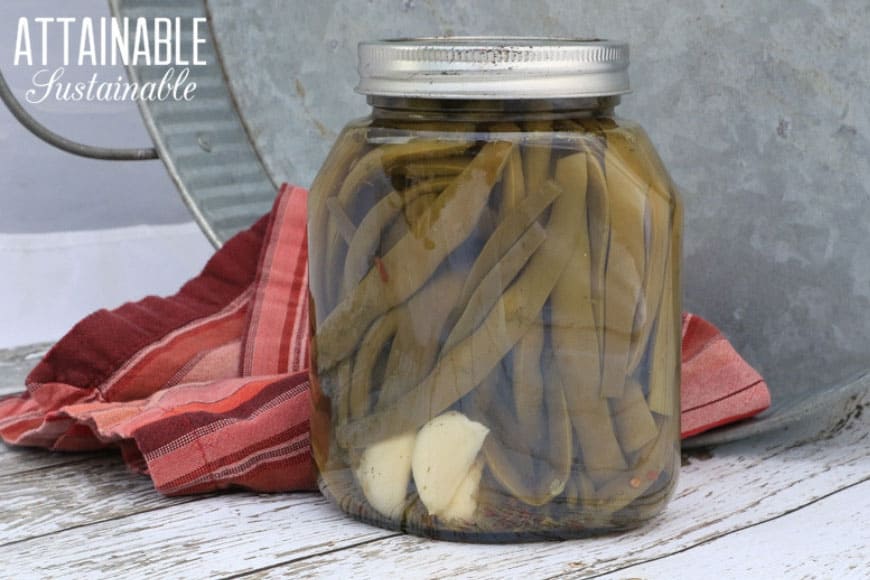
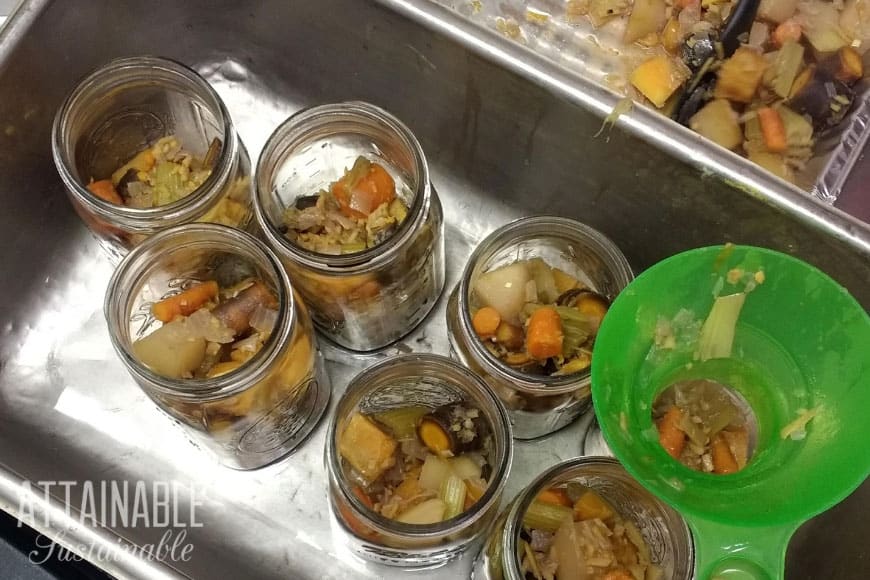
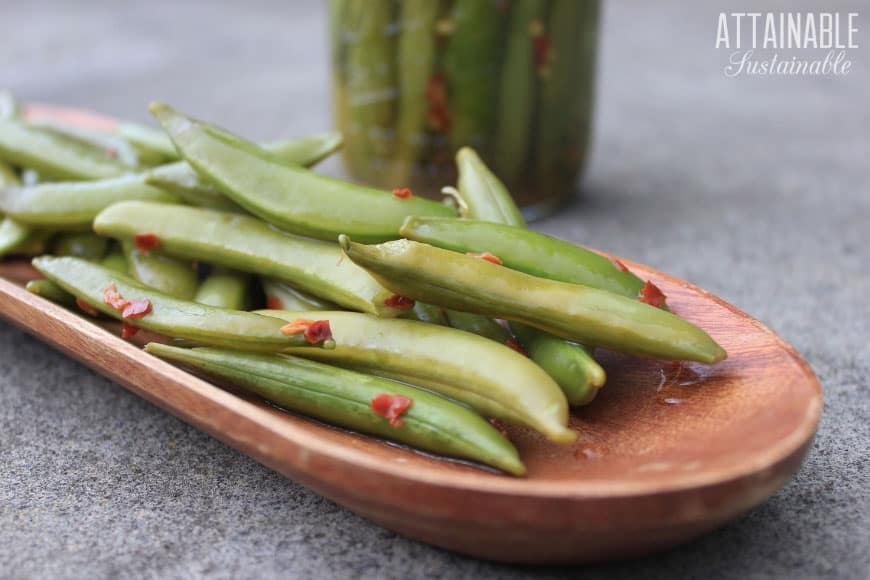
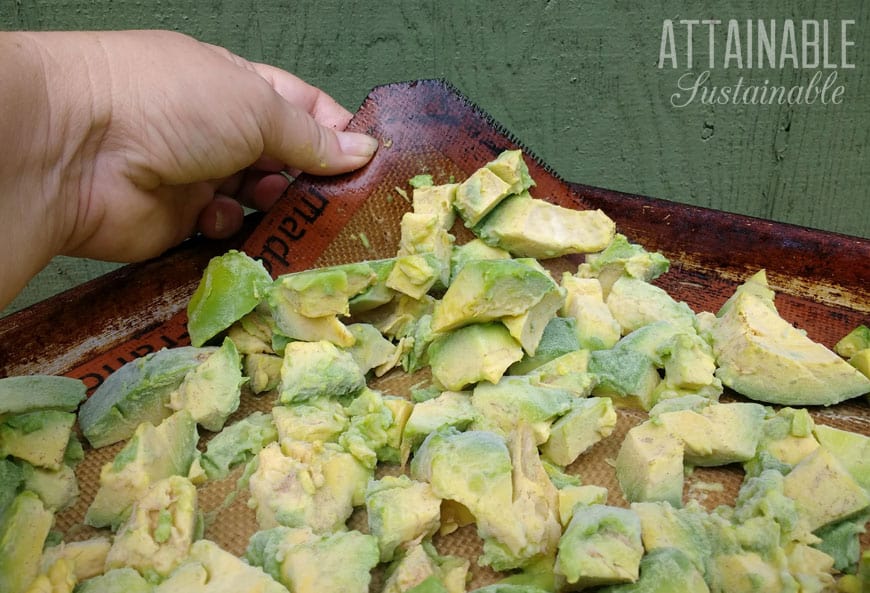
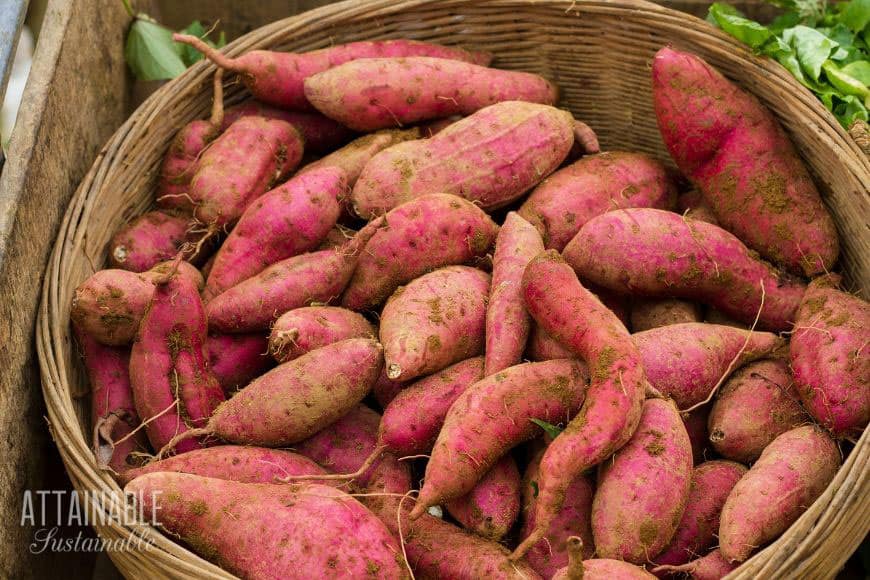
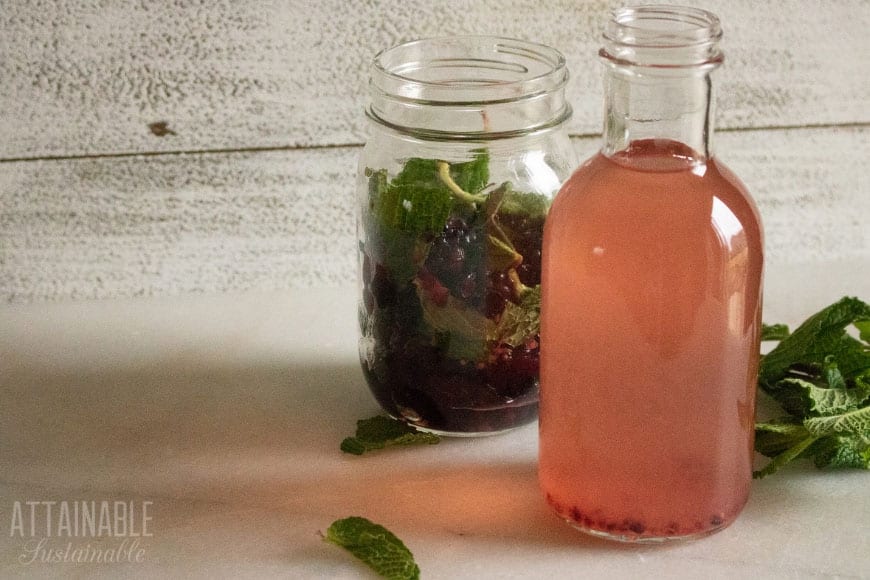
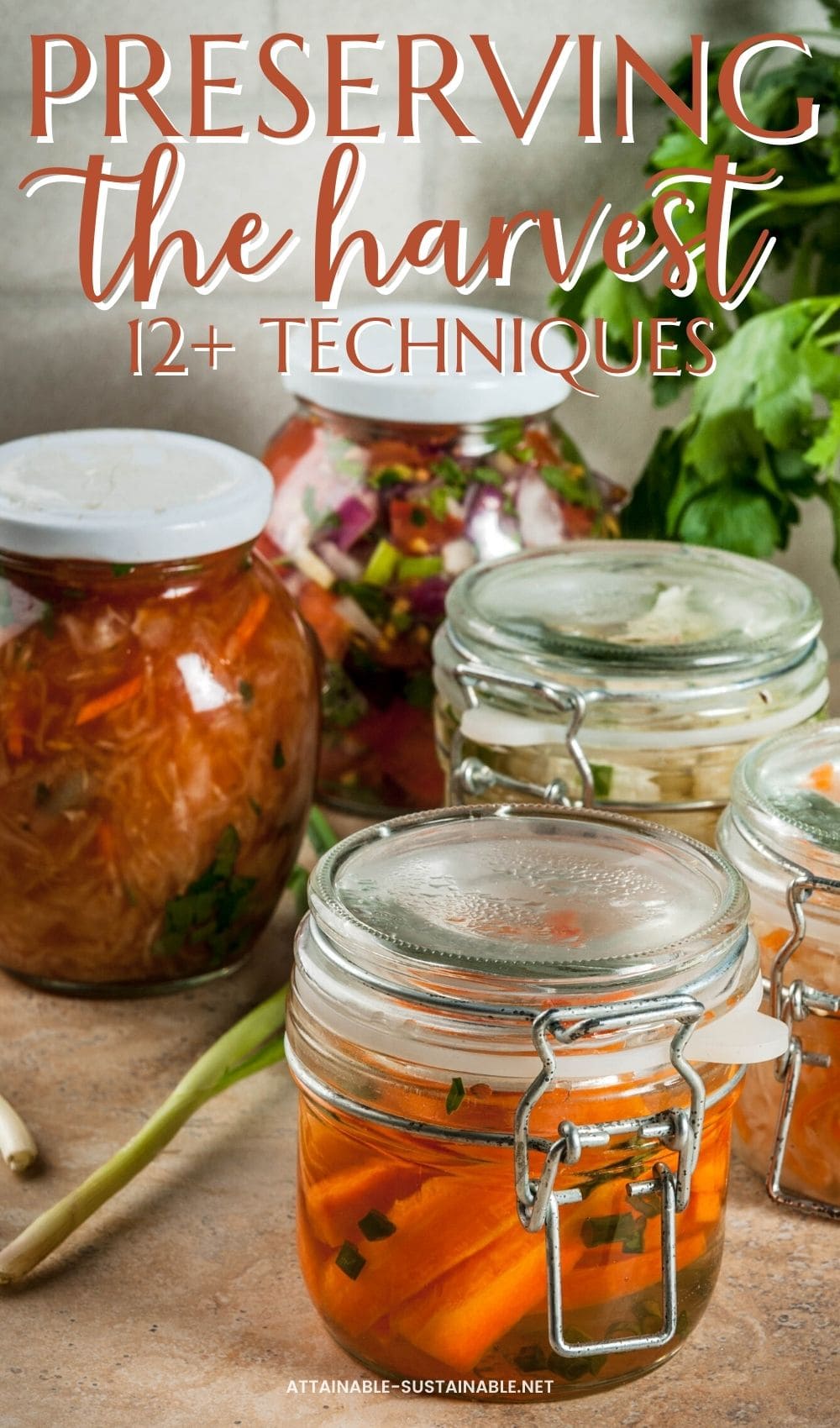
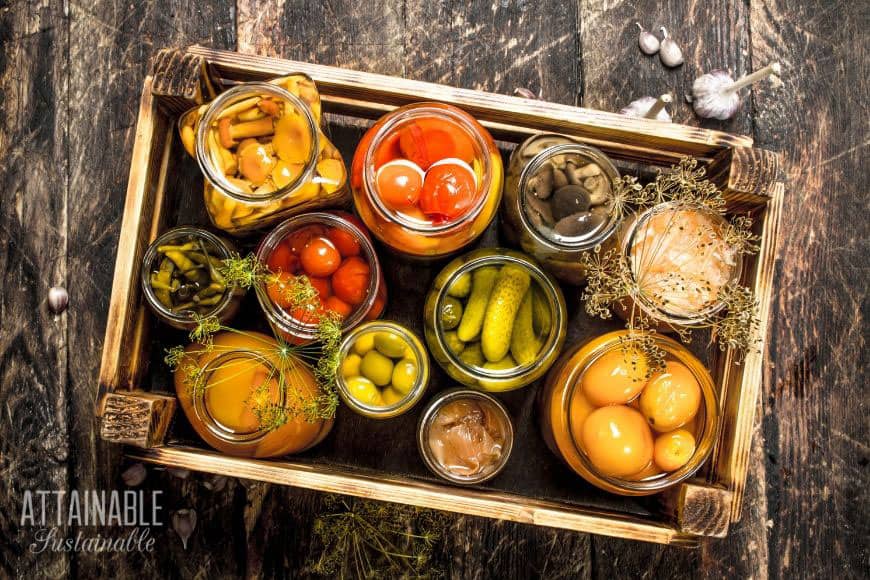

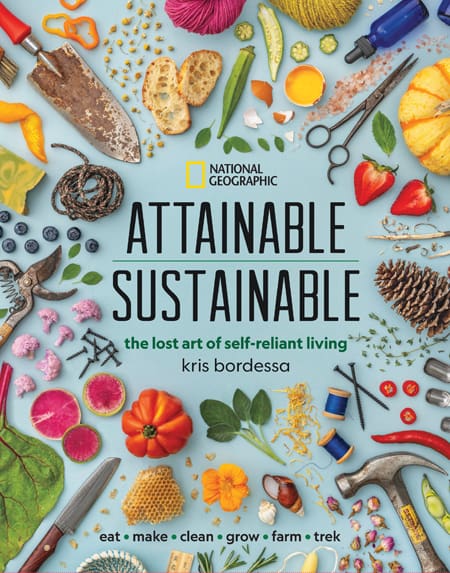
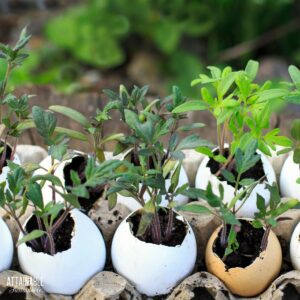
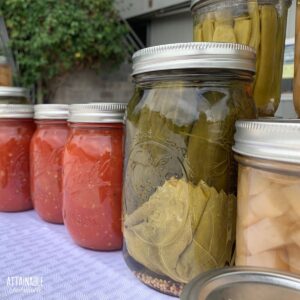
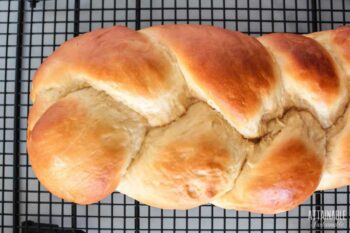
for fementing vegetables do i need any special lid or anything? walmart sells a fementing lid and a spring looking thing for the mason jar.
They can be useful if you’re just getting started with fermenting, but they are not absolutely necessary. You’ll just need to remember to “burp” the lids daily.